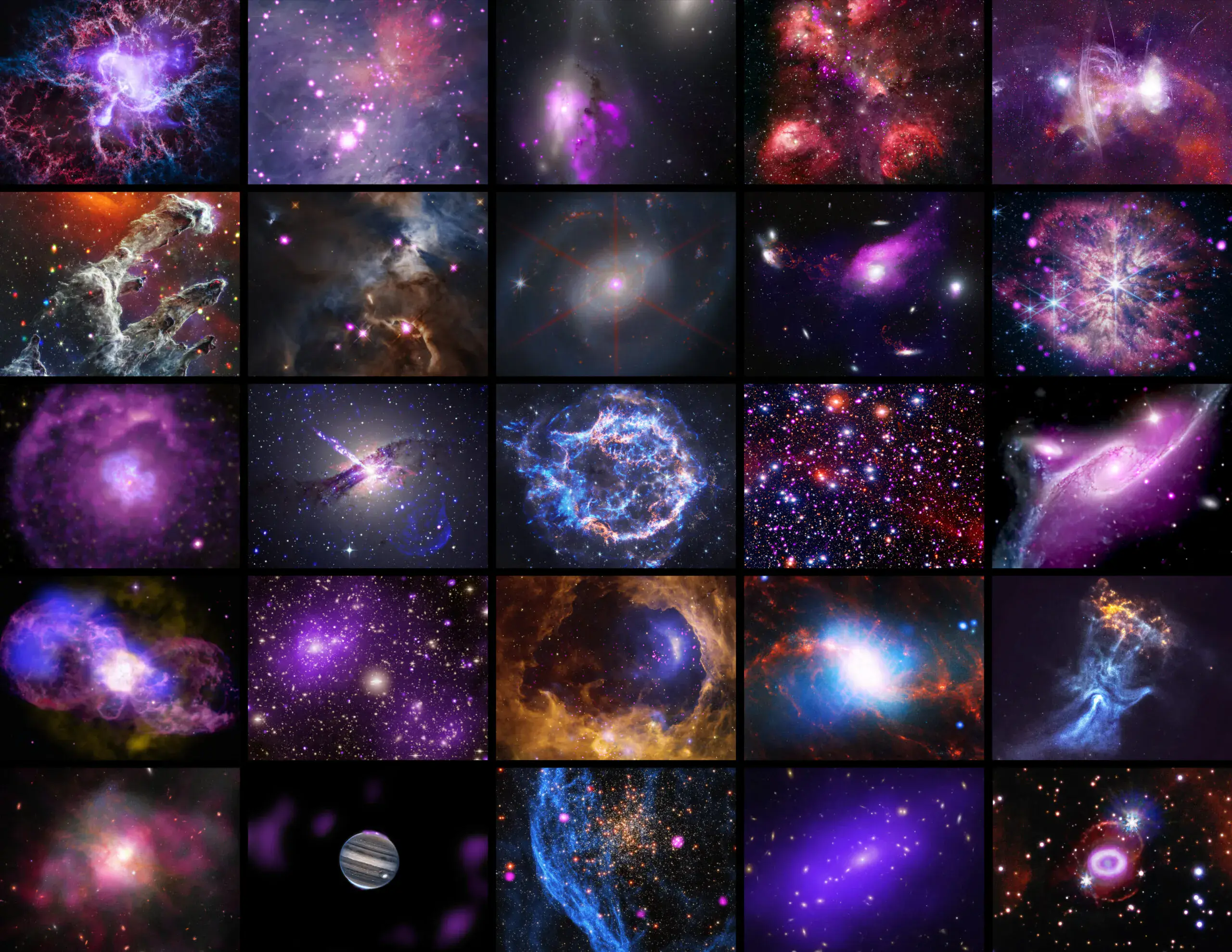The Chandra telescope “celebrated” its 25th anniversary.

July 23 marked the 25th anniversary of one of NASA’s most obscure but highly prolific space telescopes. The Chandra X-ray Observatory was launched on July 23, 1999, and during its lifetime has produced hundreds of stunning images of the cosmos, including 25 new images that have been released to mark the occasion.
The Chandra X-ray Observatory was launched on July 23, 1999, and during its lifetime has produced hundreds of stunning images of the cosmos, including 25 new images that have been published to mark the occasion.
Unlike Hubble, which observes at essentially the same wavelengths as the human eye (called the optical or visible light range), or James Webb, which observes in the infrared, Chandra works in the X-ray part of the spectrum. This allows us to see the effects of high-energy events such as kilonovae and to study objects such as supermassive black holes. It also provides a different way of looking at supernovae and the remnants they leave behind.
Supernovae and the remnants they leave behind.
The ability to detect X-rays makes the Chandra important for scientific discovery as well. For a quarter century, the Chandra has been making one discovery after another. Astronomers are using Chandra to study mysteries we didn’t even know we had when we built the telescope, — including exoplanets and dark energy.
The Chandra has been used by astronomers to study mysteries we didn’t even know we had when we built the telescope.
Pat Slane, director of the X-ray Center «Chandra»

The stunning set of new images includes objects such as nebulae, galaxies, and even a snapshot of Jupiter in our own solar system. Many of these images combine data from Chandra with data from other telescopes such as Hubble, Webb or Spitzer. These telescopes provide background images of the stars, and Chandra shows the X-rays visible in these scenes, often in shades of purple and magenta.
The Chandra telescope’s data is used to show the X-rays visible in these scenes, often in shades of violet and magenta.
These include objects familiar to space enthusiasts, such as the famous Pillars of Creation or Cassiopeia A. Previous editions of Chandra have combined its data with known images taken by Webb, adding an extra element that can only be seen in the X-ray wavelength range.
The Chandra’s previous releases have combined its data with known images taken by Webb, adding an extra element that can only be seen in the X-ray wavelengths.
“Chandra” has been a great success for mankind and its pursuit of knowledge. The incredible achievements of “Chandra” were made possible by the hard work and dedication of the team.
Andrew Schnell, acting project manager for NASA’s Chandra X-ray Observatory








